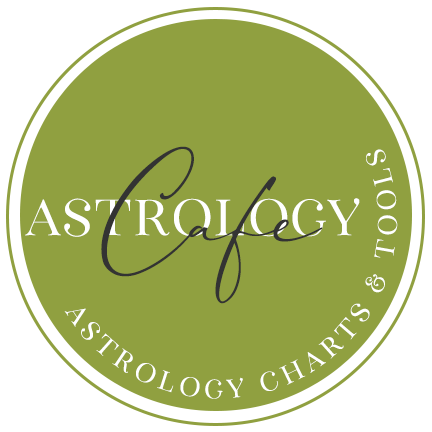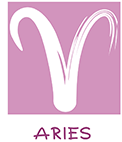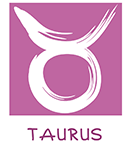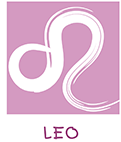Children & Parenting Astrology
Being a parent is challenging. A job description for a parent would include something of almost every other job. When we study the child’s astrological chart, we can instantly attune to how we can best guide her. Strengths, weaknesses, aptitude, and potentials jump off the page. We can see how to turn around negative momentum and maximize talents that otherwise may not have been readily apparent. Understanding leads to greater patience, a virtue of immeasurable worth in child-rearing!
Many parents intuitively take a reading at the moment of birth and even before through dreams or visions, and receive a prescient knowing of the child soon to be born. The child comes to us with her own birth chart, her particular life plan, which many believe is determined prior to birth.
Nevertheless, there can be no doubt that environmental factors, decisions made by parents, education, and free will can change, alter, or mitigate the prophecy foreseen in the chart for better or for worse. A seed containing the blueprint of the most magnificent rose will not flower if denied sunshine, water, and good soil. And many have cultivated beautiful flowers in rocky soils through love and care.
How can we challenge the child to bring out the positive Sun sign potential, but, at the same time, teach her to know clearly when she crosses the line into negatives that could cause her much grief and sorrow later, if not corrected now? This is the challenge before us as educators and parents to our children, even to the child within ourselves. So we search the chart with an eye for potential problem areas that could disrupt, hinder or block the child’s best expression. We devise how to turn them around. We take note of the positive potential and see how, like a good seed, it can be nurtured to bring forth the ripest fruit on time.
Astrology is meant to CONFIRM, NOT REPLACE, the inner guide! In reading about your child, emphasize the positive. Negative patterns can be changed; indeed, sometimes only a shade of gray separates our Achilles’ Heel from becoming our most valuable asset. Conversely, our natural talents can stagnate and, if we fail to develop them, become the open door to self-indulgence.
In astrology, trines and sextiles are considered aspects that indicate energy flowing in harmony. Squares point to challenges, blocks, internal frustrations and also pronounced talents. Oppositions indicate potential conflicts we resolve in the Tai-Chi of our interactions with others. We call squares and oppositions “dynamic aspects.” Here is where your child may meet her greatest challenges, but also where she may demonstrate her greatest strengths! In expressing and mastering the dynamic aspects, we grow and can realize our greatest achievements. Remember: Wherever you find dynamic aspects is where your child may need the most guidance, consistency, and patience on your part.
A child with Mars square Saturn can feel blocked. However, if Mars and Saturn receive positive aspects from other planets, these will mitigate the difficulty and allow the aspect to manifest in a more dynamic and purposeful way. The positive aspects can also indicate to you how to work out the difficulty successfully.
Contradictions abound in any natal chart. What to do when you come across information that is contradictory? None of us is black and white. For example, a child might be extroverted in sports, but shy in academics, or vice-versa. Some children, however, will need help in working out such structural conflicts. Sometimes we come across strengths or talents in the child that may not be our forte. A child with a grand trine in earth signs, but whose parents have little or no earth emphasis in their own charts, may need other, more practical and businesslike people coming into her life to bring out the inherent qualities of efficiency, order, and organization typical of this positive configuration. Astrological knowledge must never be used to demean, criticize, or put anyone down. Take note of areas of great sensitivity, vulnerability, or pain in the child’s chart. Find ways to help her master these. Be kind to your child. Her star has appeared and it may be different in magnitude and brilliance than your own! Love her and teach her, and learn from her, but don’t expect her to be who you are. While the child is still in the process of turning her weaknesses into strengths, we can often fill in the gap!
In studying the child’s chart–as a representation of the book of her life with many pages left to write on–we seek to understand her better in order to guide, help, and instruct her in bringing out her special uniqueness, her calling in life, her special star. In understanding our children, we also come to better understand ourselves, our own inner child.
A Child’s Sun Sign
See descriptions of children’s Sun Signs here.
A Child’s Rising Sign
Astrologers want to know what zodiac sign is rising at birth, since this gives a picture of the way we appear or come across to others. We look out upon the world through the glasses of the Rising Sign. Your child’s Rising Sign will offer clues as to how your child perceives herself or would like others to see her. Many astrologers consider the Rising Sign as important as the Sun Sign in describing identity. This makes sense, since the Ascendant describes the early childhood experience. From myriad impressions and interactions, the child will weave the tapestry of her unique selfhood. If the Rising Sign is very different from the Sun sign, the child may have to work at integrating diverse aspects of her personality.
The Ascendant is the beginning of the First House. The 1st house is the house of “Me!” How I see myself, the “me” I would like to be, and how others see me: in short, my identity. The key phrase of the first house is “I AM.” This house rules our personal self and everything about us that draws a reaction from our surroundings or from others. The 1st house describes the early childhood environment (or the child’s perception of it). Much of the child’s identity will be a reflection of the environment in which she grows up. The child’s projected image (personality) will reflect her experience and assimilation of her interaction with others. The sign on the Ascendant (1st house cusp) and its ruler are key components to understanding your child’s emerging personality. Any planet “rising” in the 1st house is going to color the personality considerably. For example, if Neptune is in the 1st house, the child will be sensitive and impressionable, no matter what sign is on the Ascendant. A child with Venus in the 1st house is likely to be attractive and charming. Mars in the 1st house is common in the charts of athletes. Astrologers will often blend the characteristics of the Sun sign with the sign on the Ascendant. For example, a child with an Aries Sun is usually somewhat self-centered. If the child, however, has Pisces Rising then she is likely to be assertive but compassionate and interested in serving others. Sometimes, however, the child may experience a conflict; in this case, for instance, part of the child may want to jump right into new experiences (Aries) whereas another part may be shy or afraid (Pisces). The child could feel overwhelmed (Pisces) by the stern parental rebuke given in response to a typically Arian impulsive action! All this may seem very complex, but you can take it step by step. Are any of us really all that simple to understand? You will have to study well the Sun sign and the Ascendant (and the sign and house the Ruler is in) plus the nature of any planet in the 1st house. Learn the keys, be sensitive and observe the child. You will see how it all comes together.
The Natal Chart
Creating the Natal Chart
The astrological, or natal, chart is a method of mapping the space surrounding our Earth for a birth moment. A natal chart is simply a snapshot of the cosmos at the time of birth – a cosmic portrait. We know that all things are in motion. Not only do the planets move slowly at different speeds in great elongated orbits around the Sun, but the Earth itself turns on its axis once in 24 hours. As the Earth turns during a day, each one of us is exposed to the entire 360 degrees of the zodiac. The natal chart is a diagram or picture that stops the cosmic clock and captures the universe as it exists at a particular moment.
Your child’s natal chart is her individual cosmic portrait or mandala. It is said that something that is born in time takes on the qualities of that specific moment. Your child’s natal chart reveals a picture of who she is and what she may become.
Astrology is a map of karma, positive and negative, that will unfold in cycles of time. The seeds of the future are always sown in the present, but can we read them? This is what the study of astrology is all about: reading the signs of the times and listening to what they have to say about ourselves, now and in the future. Astrology, then, is prophecy. Yet we know that prophecy can be altered, changed, or mitigated through free will, right or wrong decisions, prayers, and self-awareness.
The Sun sign interpretations that we find in most newspapers are a far cry from the work of professional astrologers. The sign the Sun was in on the day of your birth (for example Aries, Taurus, or Gemini) is only one of many factors that professionals look at. In addition to the day and year of birth, most professionals use the time and place of birth as well. Birth date, year, time, and place are all needed to pinpoint your place in time and space. Given this information, an astrologer creates what is called a natal or birth chart (sometimes called a horoscope).
Each natal chart includes the exact position of the Sun, Moon, and the planets: Mercury, Venus, Mars, Jupiter, Saturn, Uranus, Neptune, and Pluto. These planets are then placed in a circular diagram called a chart wheel. This wheel is a miniature diagram of what the sky looked like at the moment of birth as seen from the birthplace.
The very top of the chart, or MC (Medium Coeli or Midheaven), is that part of the zodiac directly overhead, while the bottom of the chart, or IC (Imum Coeli, or lower heaven), is the part beneath your feet and on the other side of the Earth from you. At the extreme left-hand side of the wheel is the Ascendant, or rising sign – the part of the zodiac that is on the horizon or rising at the birth moment. The Descendant is on the right-hand side of the chart. This is the part of the zodiac that is setting. These four points – the Ascendant, Descendant, Midheaven, and IC – are very important to astrologers. They are sensitive points.
Elements and Modalities
The 12 zodiac signs have different qualities. Certain groups of signs share similar qualities. The two most popular methods for sign grouping are elements and modalities. Astrologers like to see which of the groups the natal planets fall in, then add them up to produce counts or totals. It’s fun to tally up your Sun, Moon, and planets and check out your elemental and modality balance. Keep in mind while doing this is that we often attract to ourselves, or ultimately become, what we want (or lack), and we do what we can (or have to do) with what we’ve got! Studying the elements in your child’s chart can help you gain perspective on her natural temperament and mode of action. Keep in mind that these points might tally up quite differently for you! For example, if you have a lot of Cardinal planets, you’re a doer. If your child, however, lacks (wants) Cardinal planets and is strong on Fixed, she may find it harder than you to get going; but once she gets started, her efforts could be more stable. Learning your similarities and differences will help you master your own chart as well as be more patient with your child.
Elements
A very popular grouping of the signs is that of the four elements – Fire, Earth, Air, and Water.
Fire Signs: Aries, Leo, and Sagittarius. People with lots of fire in their chart are very active, involved and can do all kinds of things. Children with an emphasis on fire in their charts are vivacious and fun to be with, but they may need to work at being more reliable. These “fireballs” often find it hard to settle down. Fire-sign children love to look at the dancing flames on a summer camp-out fire. Fire is creative but, mishandled, is dangerous. Those with little fire in their charts often find it hard to get started, and they may need someone of greater enthusiasm and spark to get them going!
Earth Signs: Taurus, Virgo, and Capricorn. People with lots of earth are very practical; they can see how to do and use things. Children with a strong earth emphasis are looking for ways to be productive. They are often dependable, efficient, and “down to earth.” They like a hands-on approach to learning. Earth-sign children enjoy playing with sand, clay, and beautiful rocks. They like to build. Those with little earth tend to be less objective, less grounded, or less practical.
Air Signs: Gemini, Libra, and Aquarius. People with lots of air are analytical; they are able to resolve and draw conclusions. Children with a preponderance of air can be chatty. They are mental and like to exchange ideas. They understand emotions through reason. Those with little air sometimes have trouble with abstractions and ideas – getting the “big picture.” They tend to be less objective about their experience.
Water Signs: Cancer, Scorpio, and Pisces. People with lots of water are very feeling oriented and “sense”-ative. Children with a strong water emphasis may be artistic or musical. Their feelings are hurt easily. They seek ways to care for others. Even as babies, they enjoy quiet periods of meditation. Water-sign children often love swimming and playing in water. Those with little water may be need help getting in touch with their feelings.
Modalities.
Another popular way of grouping the zodiac signs is by the Cardinal, Fixed, and Mutable crosses.
Cardinal Signs: Aries, Cancer, Libra, and Capricorn. People with a heavy emphasis in Cardinal signs are self-starters, doers. They initiate and get things moving. Children with a Cardinal emphasis are normally active and dynamic. Life will bring them challenges through changing circumstances. They must learn the proper use of power. They can be firecrackers for getting things off the ground, but they may need guidance on follow-through. Children with few planets in Cardinal signs may have trouble getting the ball rolling.
Fixed signs: Taurus, Leo, Scorpio, and Aquarius. People with a heavy emphasis in fixed signs hang onto and preserve life. They are at the center of things and are hard to budge. Children with a strong fixed emphasis can get “fix-ated,” stubborn, and unyielding. They tend to be loyal and persevering. Life will teach them to be less attached to desire. They must learn to love in a more selfless manner. Children with few planets in fixed signs may have trouble seeing the job through and may need to cultivate stick-to-it-tive-ity.
Mutable signs: Gemini, Virgo, and Sagittarius, Pisces. People with a heavy emphasis in mutable signs are restless and impressionable. They seek ways to communicate. Children with a strong mutable emphasis are normally inquisitive and enjoy learning. They like to share what they learn with others. They may be restless and would benefit by some work with the hands. Life may offer them lessons in overcoming fear. They need to learn to focus the mind. They may be mimics, and tend to pick up knowledge easily, but they can also easily become distracted and they tend to be overly impressionable. Children with few planets in mutable signs may have trouble adapting or being flexible.
Top AspectsAspects are an important part of astrology. As the planets move in their elongated orbits around the Sun, they form various angular relationships with one another, using the Sun (or Earth) as the center. These are called aspects. The most popular aspects result from dividing the circle by numbers such as 1, 2, 3, and 4, resulting in aspects such as the conjunction (0 degrees), opposition (180 degrees), trine (120 degrees), and square (90 degrees). When two planets form an aspect with each another, their energies and natures are said to combine and work in harmony (positive) or discord (afflicted). For example, when two planets are exactly on opposite sides of the Sun (Earth), they are in opposition.
The most popular aspects can be divided into three main categories:
The “emphatic” aspects: The emphatic aspects are those that emphasize or align two planetary energies with one another.
Conjunction (0 degrees). Two planets at the same point in the zodiac are said to be in conjunction. Their natures are fused or blended into one.
Opposition (180 degrees). Two planets at opposite sides of the zodiac. The energies are in alignment with each other. They can pull together or apart, depending upon the nature of the planets involved, and the consciousness of the individual.
The “hard” (or dynamic) aspects: square (90 degrees) and semi-square (45 degrees). These represent challenge, obstacles, and creative tension; they provide the surest means to dynamic growth. Too many can block or obstruct the life flow, yet too few can indicate a lack of motivation. In the child’s chart, these aspects show where her greatest challenges and opportunities for growth may lie.
The “soft” (or harmonious) aspects: trine (120 degrees) and sextile (60 degrees). The soft aspects bring ease, clarity, and vision to our lives; we can see, grasp, and understand what is happening. Too few of the soft aspects can bring a lack of ease to our lives, while too many soft aspects make for a life that is potentially lacking in substance. In the child’s chart, the soft aspects reveal potential talent waiting to be developed. A child can “sit” on her trines and sextiles, she and her parents taking her strong points for granted. When ignored, these aspects can lead to over-indulgence and eventual weakness. Develop these points like diamonds.
“Exact” aspects and aspects’ orbs: aspects between planets gradually form, become exact, and separate. When an aspect is exact, it has its greatest impact. Yet the effect of most aspects can be felt for some time before and after the moment of exactness. The range within which an aspect is in operation is called its “orb of influence,” or simply its orb. An orb of one or two degrees of arc on either side of the exact aspect is considered a close or tight orb, while an orb of 10 degrees is said to be wide.
Aspects to the Sun and Moon (the lights) are most important, followed by the planetary aspects of Mercury, Venus, Mars, Jupiter, Saturn, Uranus, Neptune, and Pluto. If your child’s natal chart has an accurate birth time, then aspects to the chart angles (Ascendant and Midheaven) are also important. The particular combination can make a difference too. Aspects between planets such as Saturn and Mars (traditional malefics) are obviously more potentially explosive than the same aspect between Venus and Jupiter (traditional benefics)
The Planets
In astrology, the larger life of our solar system as a whole tells us something about our own personal Earth life. The interplay and relationship of the planets with one another as they circle the Sun is carefully studied. Of particular interest to astrologers are the Sun, the Moon, and the planets Mercury, Venus, Mars, Jupiter, Saturn, Uranus, Neptune, and Pluto. These are the celestial bodies used most often by modern astrologers for natal interpretation. Each of these planets represents or refers to a part of our life and self. Here are some of the concepts and key words associated with each planet:
Sun. The heart and center of it all: spirit and identity. The Sun represents father, guru, teacher or figure of authority – our connection to great solar hierarchies! In the child’s chart, the Sun shows her perception of her own identity. The Sun sign often reveals the child’s greatest strengths as well as her potential weaknesses. The Sun reveals the child’s perception of her father.
Moon. The Moon represents our mother, our surroundings, the environment out of which we come, our past and childhood, our formative years and self. In short, the Moon paints a picture of the early background, that out of which we emerged. The Moon is very prominent in the child’s chart, especially during the first seven years. Here we see the child’s perception of her relationship to her mother. Here we gauge the child’s emotional barometer, her interaction with the family, her habit patterns. The Moon should be a clear reflection of the Sun, but, because of the subconscious nature of the Moon and the state of affairs on this planet, most of us have some weeds to pluck from our lunar garden.
Mercury. Mercury is communication at light speed, linkage, thought, ideas, the light of the mind – Logos! Mercury in the child’s chart tells us much about her early schooling, her learning experience, her mentality. Mercury also relates to brothers and sisters.
Venus. Venus reveals how we respond, appreciate, cherish, or value something. Venus shows the way we love, our capacity to care for others. Venus in the child’s chart will tell us what she values, what’s important to her and how she shows love and appreciation, and how she cares for her belongings. Venus describes the child’s sense of self-worth. Venus reveals the child’s attitudes toward, and potential future experiences with, romantic partners.
Mars. Mars is the planet of action through desire. Mars is energy and Mars is our clue to what motivates our child. Mars in the child’s chart reveals how she is likely to express anger, the kind of discipline she may need, and the type of sports and recreation she might enjoy.
Jupiter. Jupiter is the pathfinder or lamp through the trials of time. Jupiter shows where opportunities for expansion lie. Jupiter is grace. Jupiter is the planet that brings us the rewards of good karma. Jupiter relates to religion, philosophy, and higher education. By studying Jupiter in the child’s chart, we can discover how to teach our child fundamental truths and ethics. We can also gauge in what areas of life “too much of a good thing” could be harmful to her.
Saturn. Saturn is the great teacher, the giver of laws or rules, the Initiator. Saturn also represents Chronos – time – and the material world. In the child’s chart, Saturn represents the limits placed upon her by parents, authorities and teachers, and by time itself. As Saturn makes its cycles, we can expect the child to test these limitations.
By studying Saturn, we can glean an understanding of the best approach to adopt in disciplining the child. Saturn reveals much about the child’s relationship to her father. Saturn gives us clues as to the child’s later career. Saturn can show us where the child may feel thwarted and how we can best help her. Studying Saturn by sign, aspects, and house position will reveal in what area of life the child may later (as an adult) confront some of her greatest challenges. Knowing this, we as parents can take definite steps to prepare her to pass every test!
Uranus. Uranus is the Great Awakener. Uranus represents breakthroughs: insight, invention, innovation. Where Saturn crystallizes into form, Uranus shatters and creates anew! In the child’s chart, Uranus may reveal special talent and unique abilities. Uranus may reveal how the child may try to “break” out of parental (Saturnian) restrictions. Uranus tells us about the child’s attitude toward her friends and peers.
Neptune. Neptune is the planet that brings enlightenment and compassion. Neptune also brings confusion, illusion, delusion, self-deception and/or deception from others. Neptune’s influence is subtle and hard to define. Neptune in the child’s chart may reveal much about her devotional nature, artistic and musical talent, her attunement to higher spheres, her ability to cope with reality, her dreams, and where she may have to overcome fear.
Pluto. Pluto is the “bad guy” of the zodiac, the “dweller on the threshold.” As we mature, we have to face (and conquer or be conquered by) that dweller. When we challenge the darkness Pluto exposes, we enter a cycle of creation and regeneration, usually through a transmutative or transformative experience generally in adulthood, but the seeds can be set in childhood or even in past lives)! When Pluto makes personal contacts in the child’s chart, it may point to an area of extreme vulnerability, crisis, and emotional intensity. Pluto shows the issues native to the generation into which our child was born, issues that may challenge and change our own!
Lunar north node. Vocation or application point. The North Node is a point of strength.
The Lights
The Sun and the Moon are the two most significant bodies in the natal chart. They are referred to as “the lights.”
The Sun represents our ego and identity, how we see ourselves, and how we project outward to the world. In manifesting our highest potential, our spiritual identity, we have many choices along the way. The sign position of the Sun reveals the nature of our greatest potential attainment (plus attainment we have brought in from other lifetimes), and also the nature of our points of greatest vulnerability. Understanding the qualities of the child’s Sun sign will help us better understand her emerging personality, her natural expression, and how she approaches life. The house position indicates an area of high focus in her life. The Sun also tells about the child’s attitude toward authorities.
The Moon is reflective; it represents the soul, struggling through the veils of “mater” to unite with the higher self. Where the Sun is conscious will directed toward an outer purpose, the Moon is the subconscious, emotions, and the feeling world. The Sun is father and authorities; the Moon is mother and our roots, our family, home and nation. The Moon should be a clear reflection of spirit, and one day perhaps she shall be, but for now the Moon tends to amplify the more negative emotions and habit patterns within the individual and the mass consciousness. We can see our child’s perceptions of her father (Sun) and mother (Moon) by studying the lights. We can see how we, her parents and teachers, may have to work on our own emotions and habits to help the child obtain greater self-mastery, and where we could, even inadvertently, injure her by passing on generational patterns of negative behavior. Lunar energy is most significant in the first seven years of life.
The Signs of the Zodiac: keywords and esoteric meditations
Aries: The Ram. Spring. The pioneer, adventurer. Courage, daring, boldness. The fountainhead or source. The word of Logos, the “I AM THAT I AM.” Impulse, energetic, start, beginning, manifestation. However we see our identity in Aries (the Sun) will color the rest of the chart. In Aries, through patience and the higher mind, we exercise control and replace the human ego with the divine. To do so, we must battle Martian energy and master anger, aggression, conceit, and all manner of ego games.
Taurus: The Bull. Taurus is the steady, deliberate, determined response of life to the new ideas and impulses of Aries – possessing them, embodying them. Taurus is the sign of the Builders. In Taurus, we make way for the Buddha (the enlightened one) through an inner obedience to our calling in life. Through the fires of love, we transmute human density and receive illumination. The bull that blindly follows the red cape of desire must become the ox who serves.
Gemini: The Twins. Communicating, inquiring, investigating, exploring. “Getting to know you, getting to know all about you.” Nervous, versatile, inventive, curious, linking, reasoning, making connections. Gemini is the sign where we end our differences through effective communication (come-into-union). We transcend envy and jealousy (that would divide us) through knowledge and the application of wisdom.
Cancer: The Crab. The crab carries his home with him wherever he goes. Cancer is the experience, vehicle, or body itself. The house and home – The Chariot. The experience as in feeling, living, and sensing life. Cancer energy is protective, nurturing, and compassionate. Cancer is the mother, human and divine, who gives and gives of herself until this daily giving becomes second nature.
In Cancer we learn self-discipline to raise up the tremendous creative force of the mother, the kundalini. We overcome self-pity, self-justification and indecision and are harmonious with all of life.
Leo: The Lion. Leo is fire of heart! Leo is the outward expression of love: acting, creativity, children, sports, and romance. Leo is the sign of Kings. In Leo we learn humility and magnanimity of heart, the mark of true leadership! Through the fires of love, we transmute hardness of heart, which has made us blind, into God’s great gifts. We learn to care for and appreciate life. We express gratitude in thought, word, and deed.
Virgo: The Virgin. Virgo is the sign of health, works, and service. Virgo is the Celestial Maiden. In her arms she carries the sheaves of wheat, symbolizing wisdom. With meticulous discernment, she separates out the chaff, makes flour, and distributes the bread to a world hungry for her spiritual guidance. She is the Earth Mother who shows us “how to do it” step by step. She is the teacher. In her great love of geometry and perfection, the Earth Mother pays special attention to details, repair, craftsmanship. She is busy, concerned, and careful, practical, analytical, and discriminating.
In Virgo we balance our karmic accounts. Through peace and understanding, we transmute anger and a sense of injustice. We replace a tendency to worry with a positive mental outlook. We balance our accounts through service to life.
Libra: The Scales. Marriage and union. (Yoga: to join, or yoke.) Marriage is the most common form of yoga. Libra energy is diplomatic, compassionate, attentive to the needs of others. In Libra we learn to be centered in the heart. Only there and in the higher mind can we be at the fulcrum of reality. We treat our brother as we would have him treat us, but learn to be unafraid to stand up for truth, even if in so doing we rock the Libran scales! In Libra, we seek balance to be the instruments of love. Painful experiences in love – dishonesty, treachery, and intrigue – are arrows that cause pain but also purify and bring us back to the center in God.
Scorpio: The Scorpion. The Scorpion, the Phoenix, the Eagle. Scorpio is the sign of great yet, more often than not, painful transformations. Rising out of the ashes of an ancient karma, we reclaim our divine sonship. We learn it is far better to give than to receive. We learn to detach ourselves from those desires not in keeping with our Higher Self. We remove all that is nonessential to our path. Scorpio energy is intense, penetrating, purging, metamorphic. This is the sign of the Warrior and the Initiate. Its key word is TRIUMPH!
Sagittarius: The Archer/the Centaur. What remains after the furnace of Scorpio: truth, that which cannot be further reduced. Sagittarius represents all the great cultural traditions that frame civilization: law, religion, history, and philosophy. Sagittarian energy is enthusiastic, profound, generous, and candid. This is the sign of Victory over all the misuses of every other sign! In Sagittarius we learn to overcome lower desires (the Centaur) and aim our arrow higher! If we give in to freedom without responsibility, we can find ourselves on a roller coaster ride hard to get off! Beethoven (a Sagittarian) composed his greatest symphonies after he had gone deaf, and Sagittarius is a sign of overcoming all human limitations and soaring for the sky! The only thing that can rob us of our victory is resentment and retaliation. When we have a rolling momentum of victory, there is no room for resentment. We rise higher.
Capricorn: The Goat. The purified essence bursts into light. Capricorn is the greatest concentration of spirit in the earth body, the crystallization of spirit in earthly works and endeavors. When we remember that we are the instruments of the light, and not the source of its creation, we can accomplish all things. Those who become drunk with power meet their downfall in this sign. Those who are humble do the works of the father, and they often become governors of men. Capricorn energy gives practical vision. Capricorn is dependable, steady, constant, organized, managerial. Misused it is cold, dictatorial, judgmental, manipulative, and cruel.
Aquarius: The Water Bearer. Aquarius carries the spiritual light of Capricorn into actuality. The will to implement our clearest vision; alchemy. Aquarius relates to freedom, innovation, and brotherly love. Aquarius is the sign of technology, scientific advances that are intended to free us from drudgery to better pursue the life of the spirit! In working with others, and for causes greater than ourselves, we learn the lessons of love – cooperation, surrender of personal desire for the good of all, and true fraternity. Irritation, intellectual conceit, and intolerance are misuses of the Aquarian light born out of hardness of heart.
Pisces: The Fishes. Jesus Christ was born at the beginning of the Piscean Age. He is known as the Piscean avatar. His ministry exemplified a path of self-mastery characterized by charity, compassion, mystical understanding. Pisces energy is intuitive, understanding, willing to sacrifice. In Pisces we call upon courage, illumination, and faith to overcome all manner of fear (based on past memories from this or other lifetimes, or embedded in the race subconscious). We obtain peace and become teachers holding a lamp of wisdom to the many. Doubt, fear, self-pity, illusion, delusion and all manner of evading reality (alcoholism, drug abuse, etc.) are “death by drowning.” In Pisces, we learn to ride the wave; sometimes we must dive in unafraid!
The Chart Wheel and the Zodiac
The astrological wheel, or mandala, is a map of the space surrounding us at the time of our birth. The chart represents the hub of life! The wheel is divided into twelve sections called houses – six houses in the sky above, six beneath the Earth below. These houses are numbered counterclockwise, starting with the 1st house and the direction east on the left-hand side of the wheel. Planets in the heavens are placed on the chart wheel in the houses that correspond to where they actually are in the sky. Of the 12 houses, astrologers find the four most important are the one directly above our heads (10th), the one under our feet (4th), the one on the left and to the east (1st), and the one on the right and to the west (7th). These four are called “angular” because they mark the corners of the chart: south, north, east, and west.
Life continues after the birth moment. Astrologers watch the planets (as they continue on in the sky after a birth) move through the houses of the natal chart. Their movement is counterclockwise: from the upper hemisphere (houses 7-12), across the ascendant (1st house cusp), into the lower hemisphere (houses 1-6), and on around.
In the chart wheel, the planets are placed in their zodiac positions. The zodiac stretches in a circle through all 360 degrees of the surrounding sky, and this circle is divided into sections of 30 degrees — the familiar 12 signs. Planet positions are measured within signs by degrees, minutes, and seconds of circular arc. Each degree contains 60 minutes of arc and each minute of arc contains 60 seconds of arc. For example, I might tell you that my Moon (Moon at birth) is in the sign Leo (5th sign). More exactly it is in the 01st degree of Leo. It is actually at 01 degree and 28 minutes of the sign Leo.
The chart wheel is usually divided into 12 sections called houses. The houses are numbered (counterclockwise) from 1 to 12. The pie-like lines that divide one house from the next are called house cusps. For example, the cusp of the 1st house is the horizontal line on the left-hand (east) side of the wheel.
Keep in mind that our Earth makes a complete turn on its axis once in 24 hours. The chart wheel represents the space surrounding where we were born. It is as if we were standing outside with the sky above us (upper part of chart) and the Earth beneath our feet (lower hemisphere). As the Earth turns, it brings each of the 360 degrees of the zodiac overhead (or to any part of the wheel) once in 24 hours — a new degree of the zodiac every four minutes or so.
As you can see, the symbols for the planets have been placed in the part of the sky (the house) in which they were at the time of your birth. For example, if you were born in the daytime, then the symbol for the Sun will be somewhere in the upper half of the wheel. If you were born at noon, the sun would be almost right overhead or at the top of the chart, while if you were born at midnight it would be at the bottom (4th house) of the chart.
The wheel is also seen as two hemispheres — a top and a bottom. The upper part of the chart (houses 7-12) represents that part of the sky that was overhead and above the horizon at the time of our birth. It has to do with our participation in the world of thoughts, ideas, ideals, planning, and public service. Here we see our interaction with others, joint finances, career development, shared philosophies, and group endeavors. The lower hemisphere (houses 1-6) marks that part of the heavens that we have under us — and cannot see — below the horizon and on the other side of the Earth from us. It has more to do with personal issues — myself, my money, my home, my job, etc. — and it outlines our subjective experiences.
Top The Wheel of Houses
The chart wheel or mandala of 12 houses can be seen as a circle, or cycle, with each house leading to the next house, and so on, in a counterclockwise direction. Let’s start at the very top of the wheel — the MC and the cusp of the 10th house.
10th House. The 10th house is at the peak of the chart, the point of the crystallization of self into the world at large. Here we give back to the world our specialized talent and achievement, our dharma, the manifestation of our incarnation. It is directly overhead, up-there, and to the south. It is the house of clear, practical vision. Ideas can take their start here as planets pass through the 10th house. In the natal chart, the 10th house is associated with career, vocation, and the like. In the child’s chart, the 10th house represents his interaction with his father (or dominant parent), with elders and authorities and what he wants to do when he grows up. The sign on the 10th house cusp gives us insight into the child’s career potential; the nature of the career or his attitude to advancement. For example, a child with Aries (ruled by Mars) on the Midheaven might be headed for a job with the police force, military, or steel industry. Of course, this will only be the case for a certain percentage of children. The majority, however, will take an Arian approach to work: They will be self-enterprising and willing to work hard. They may butt heads with their employers. They may be impatient with those beneath them (employees, hirelings, etc.) The latter may reflect their attitude toward authority figures — parents, principals, policemen — during their youth. The child with planets in the 10th house may be thinking about his career early in life but may require considerable training to reach the heights to which he aspires.
11th House. The 11th house is a movement away from the 10th and down towards the lower hemisphere of the chart. The 11th house takes the clear idea seen in the 10th and resolves to put it to work, usually enlisting the help of friends and others. The 11th house has to do with plans for action, group goals, cooperation. In the child’s chart, the 11th house will tell us much about his goals and the nature of his aspirations. The 11th house also reveals how a child interacts with his friends. For example, a child with Cancer on the 11th house cusp would be protective toward his friends. He likes to invite them over, and a sleep-over would be a special treat! He could be very attached to his friends. If a child has planets in the 11th house, his chart will take on an Aquarian coloring: he may be innovative, interested in science or electronics, and be free-spirited.
12th House. The 12th house is the house of the past, the subconscious and so is associated with karma. It is called the house of “hidden enemies,” the worst of these originating within ourselves. It is also the house of “hidden strength” and spiritual reserves. The 12th house can reveal to us the nature of fears the child must overcome, in addition to hidden strengths upon which he can draw. The child with planets in the 12th house may be shy, intuitive, even clairvoyant. He sees the world through the eyes of a mystic or dreamer. He may not know clearly where fantasy ends and reality begins. Meditation, music, and art often can often bring him out of his shell and channel his imagination constructively.
The 1st house marks the division between the upper and lower houses. The upper houses are more outer in their manifestations. A child with the majority of planets in the upper hemisphere is likely to be “other-oriented” (more interested in serving others than in serving himself). The child with the majority of planets in the lower hemisphere is more personal and subjective. Home, family, and security need to be established before he will venture out.
1st House. The 1st house is very important in a child’s chart because it depicts the early childhood environment. The 1st house is the house of identity which will be primarily shaped by early experiences in life. The first house tells how we project ourselves outward (our personalities) and how others perceive us. The child’s perception of himself will be colored by the nature of the planet(s) in the 1st house, more so if the planet is close to the Ascendant.
2nd House. The 2nd house is the house of values, what we value, and how we treat our valuables. This is also the house of income and right livelihood, which of course will be influenced by the degree to which we developed our personal resources during childhood. The sign on the 2nd house cusp and planets in the 2nd house provide clues to talents your child has that you will want to help him develop. A child with Venus in the 2nd house, for example, could be musical or artistic. The child with Aries on the 2nd house cusp will be quick to begin new projects but may not be realistic in his assessment of his ability to carry them out.
3rd House. The 3rd house continues the drama set forth in the 1st and 2nd. The 1st is the new start, the 2nd is what is drawn forth in response to the 1st, and the 3rd is how the situation develops to its fullness. The 3rd house has to do with the many details of everyday living. The 3rd house is the house of communication and of early childhood education. Planets in the third house and the sign on the 3rd house cusp will reveal much about the child’s manner of communicating. Here the child’s attitude toward schoolwork is revealed. The 3rd house also deals with brothers and sisters. The child with Neptune (imagination) in the 3rd house (mind) may excel at poetry or musical composition. On the other hand, he could be dreamy and easily distracted.
4th House. The 4th is one of the angular houses and starts a new series of three. The 4th house is the basement of the chart, and so it represents the subconscious. It is also the cradle of life, the mother, family, and heritage. Planets in the 4th house and the sign on the 4th house cusp in the child’s chart show us the child’s perception of the early home environment — the parents and physical home, the nurturing the child receives, his sense of security or lack of it, and his later role as parent and patriot. If your child has planets in the house of the family, the early childhood experience makes a lasting impression upon him.
5th House. The 5th house is the house of creativity, romance and children. The 5th house is the experience of sharing who we are with others, of creative self-expression, of the giving and receiving of love. Fun is also related to the 5th house. When we study the child’s 5th house we discover what types of recreation may appeal to him. We perceive his need for attention and recognition, important steps in building his self-esteem. The child with planets in the 5th house dramatizes emotion; his actions say, “look at me!”
6th House. As we reach the 6th house, the “party” of the 5th is over. Now it’s time to get down to business! The 6th house is the house of work and service. This house relates to training and so reveals much about the child’s habits, which are established for the most part in early childhood: eating habits, study skills, care of the body, maintenance of his room, etc. The child with Virgo on the 6th house cusp tends to be meticulous in his work. The 6th house is also the house of health and can give us clues as to the child’s physical constitution and potential health problems. A child with Mars in the 6th house could be very robust and energetic but could also be critical or bossy with classmates (and later with employees). He could be susceptible to fevers and inflammations.
7th House. The 7th house, another angular house, marks the beginning of a new series of three houses. Here we cross over from the personal houses to the impersonal houses. The personal experience of the first six houses is finished. It falls away from us and we see it as a complete stage in our development. We begin the upward trek toward a more impersonal service, with less concern for self, and more energy expended toward helping others. We begin by seeking a partner, cooperating with others, forming significant unions: Marriage. Planets in the 7th house and the sign on the 7th house cusp reveal to us how the child gets along with others. Is he sociable or shy? Does he attract friends that are good for him or does he tend to cling to fruitless relationships. Will he think well before “tying the knot,” or is he more apt to jump into marriage impetuously? A child with many planets in the 7th house will be very involved with other people and their affairs.
8th House. The 8th house results from our fully grasping the nature of the completed personal experience in the first seven houses… what was right about it and what was wrong. Here we strip away and can do without what was wrong. The extra baggage is unloaded.
The 8th house is also the house of resources we share with others. It is the house of sex, money and death. In the child’s chart, planets in the 8th house and the sign on the 8th house cusp provide clues as to stewardship of belongings, his ability to share, and his search for the answers to questions of life and death. Here we see potential transformative events in the life of the child. We see his values, his strongest desires, and his search for the answers to the deeper mysteries of life. The child with Capricorn (power) on the 8th house may want to rule the sandbox, but will probably discover that when he doesn’t share the kingdom he manages it alone!
9th House. The 9th house has to do with what remains when all extra is stripped away. It is what endures from the entire episode, the seed essence. It becomes the light for a new idea in the 10th, where the whole cycle repeats itself. The 9th house shows how we arrive at a higher illumination through religion, travel, philosophical thought, and travel. Planets in the 9th house and the sign on the 9th house cusp can tell us how the child reaches out to know more: something of the child’s aspirations for truth, his philosophy in life (as developed from early religious and moral training, his higher education, and his own experience), and his potential travel experiences.
The Chart Wheel, or Mandala:
Here are some brief descriptions of the twelve houses and what they mean to astrologers. We will start with the 10th house — the house of clear, practical vision.
Tenth house. Career. Practical talents. Ambition and status. Concern with reputation. Practical vision and supervisory skills. The child’s interaction with adults and elders. The father and father principle. The child’s attitude toward responsibility.
Eleventh house. The child’s interactions with his friends. How he relates to his peers. His wishes and aspirations.
Twelfth house. The child’s hidden fears and inner strengths. His participation in “institutions” such as churches, hospitals, and boarding schools. The workings of his imagination.
First house. The way the child perceives himself and how he comes across to others. The early environment. How he sees himself (Sun and Ascendant on the 1st house cusp) will color the entire chart.
Second house. Possessions, money, things. What the child values and what is valuable to him. How he treats his belongings. Responsibility and stewardship.
Third house. The child’s ability to cogitate and to communicate ideas: thinking, talking, listening, writing, reading, visits. The acquisition of knowledge: schooling, questions, interactions, curiosity. The child’s relationship with his brothers and sisters.
Fourth house. The child’s roots: his national and cultural heritage, his mother and family, his physical home and early childhood environment. What he needs to feel secure. How he cares for others. Harmony or discord with family members. His basic foundation in life.
Fifth house. How the child expresses love: awareness, pride, self-discovery. Acting, playing, sport and recreation, teaching others. His idea of fun!
Sixth house. Health, work, and service. How the child cares for himself and for life. His pets. His daily habits: eating, dressing, hygiene. His willingness to serve. Physical well-being or potential health problems. Work requiring skill or special training such as crafts and hobbies.
Seventh house. Others. How the child sees himself in relation to his friends. His ability to cooperate with a partner. His concept of self as opposed to how others may see him. His sense of justice and fair play. Competition. His awareness and interaction with romantic interests. His social life.
Eighth house. What the child looks for in others; his ability to share and to be a steward of his things and money (allowance). Sacrifice and selfishness. Transformative experiences in his life. His ability to be self-disciplined, to let go of or delay gratification of desires. How he is likely to approach sex later in life.
Ninth house. The child’s early religious and moral training. His travel experience. His search for understanding. His sense of a mission in life. His need for higher education or training. His own search for meaning.
At the time of our birth, the planets (through their configurations and relationships) tell us something about the quality of the moment of time into which we were born. Each planet points to special traits within us. Yet, of all the planets, the two most important planets to astrologers are the “lights,” the Sun and the Moon. From where we stand here on Earth, the great shining Sun by day and the reflecting Moon at night are our constant companions. The Sun and Moon are our greatest guides in understanding our children, their temperament, personality, relationship with parents and other significant adults, their sense of purpose, their feelings and much more! The Sun and Moon give us clues as to where our children are headed and how we can help them on the way.
The Sun represents our identity, or self and as such, colors every other aspect of the chart. In a child’s chart, the Sun will reveal much about her emerging personality. Your child’s greatest strengths and challenges are often described by the qualities of her Sun Sign. A Leo child, for example, is a born leader but may be pompous. A Piscean youngster may draw upon a rich imagination to inspire others but may seek to escape reality by retreating into a fantasy world. The wise parent will train the child to manifest the positive qualities of her Sun Sign. The position of the Sun also helps us understand what motivates our children. A child with a Fire sign Sun such as Aries will generally be motivated by seeking new experiences in which she can assert herself, whereas a Water sign Sun child is more emotional and will seek comfort and security before venturing out. Children born into Earth signs tend to be grounded. They’re builders and seek means of practical expression. They want to know, “How does it work?” Air sign Sun children can experience life through thoughts and thrive on social interaction and communication. The Sun also represents the child’s perception of the father (or dominant parent) and the qualities the child identifies with within the father. From here, we extend our understanding of this relationship to authorities and adults in general and later, to the child’s understanding of her own life purpose. For example, a child with the Sun in harmonious aspect to Mars would likely feel supported by the father and therefore more prone to self-confidence than a child born with the Sun square Mars. The latter might feel blocked on some level by the father or dominant parent. Both, however, are dynamic positions indicating leadership potential.
In a child’s chart, we look to the position of the Moon to understand the child’s perception of her mother, of her need to be cared for and to nurture. The Moon also describes the child’s experience within her family, with its particular dynamics, tradition and heritage. From these, the child establishes her roots. The Moon, then, indicates the early childhood environment, our early support systems. Emotional responses are traced to the Moon and hence, to patterns established during childhood (and even during other lifetimes). These often become automatic and subconscious in the adult. Thus, the sign placement of the Moon reveals much about our child’s emotional needs and expressions. The Moon may dominate the child’s chart during the first 7 years of life. The Moon will tell us what the child needs to feel secure and also what kinds of habits would be helpful or detrimental to her development. For example, a child with a Sagittarian Moon is happy when she has plenty of room to explore. (But she needs to learn the value of limits) A Cancer Moon child, in contrast, may cling to Mom’s apron strings. (But she may need to overcome a fear of making it on her own).
Mercury represents thoughts, ideas, and the mental process in general. Communications — by phone, letter, spoken, or however–are ruled by Mercury. Also thoughts, connections, phone wires, and everything that connects and conveys — even forms of transportation. In the child’s chart, Mercury describes the myriad aspects of schooling — teachers, study habits, homework, learning skills, concentration (or lack of it). Your child’s relationship with brothers and sisters are indicated by Mercury as well. The way your child thinks, receives, shares and transmits information and knowledge will be revealed by studying the position of Mercury in her chart. Mercury relates to hands, fine motor abilities, and to handwriting and drafting skills. Mercury by sign and element tells us how the child studies and what she likes to study, and how we (her parents and teachers) can help her gain greater academic expertise. Children with Mercury in Fire signs think and talk simultaneously and are spontaneous. They enjoy games that make learning fun! Children with Mercury in Air Signs can chatter away and still keep going! Words can come alive for them and they enjoy listening to (or creating) colorful tales and stories. Communication is their thing. They may have to work at being listeners, however! Children with Mercury in Water signs may need help thinking clearly since emotion runs into thoughts. These children like profound subject matter. Children with Mercury in Earth signs generally have a good measure of common sense. Hands-on training suits them best.
Venus rules our values and sense of appreciation. When we appraise or appreciate something, whether that be another person or a new car, this is Venus — the sense of love and compassion we may feel. Venus in the child’s chart shows us what kinds of things our child appreciates, her innate sense of beauty (which can be developed), the manner in which she interacts with her friends and with adults, and how she shows love. Children with Venus in ardent Leo, for example, are demonstrative and fun-loving. They tend to shine and love bright, colorful things. Venus in Scorpio children, on the other hand, may be shy but exceptionally kind and thoughtful. These children may want Mom all to themselves! The Venus in Libra child is a social butterfly and loves beauty in her clothes and bedroom. Venus in Taurus loves beautiful things, pretty rocks and later precious stones. She may be a gourmet. She may need help learning to share what she sees as prized possessions. A study of Venus by sign, house and aspect also reveals something about your child’s taste in food, eating habits, care of possessions and attitude toward money and belongings.
Mars is the planet of emotion and drive. When we search for the meaning of something, it is Mars that urges us on, keeps us searching. Mars will tell us what motivates our child, what captures her interest. By studying the aspects formed between Mars and other planets we discern if our child expresses desire in a healthy and direct manner or whether she feels blocked (squares) by inner or outer conditions. We also learn how our child expresses anger, whether in strong bursts (Mars in Fire Signs), bottled up and tears (Mars in Water Signs) or with cutting words (Air signs). With greater understanding, we can help our child deal with her feelings in a constructive way. Mars tells us about our child’s interest and aptitude (or lack of it), for physical exercises, sports, recreation. Mars drives us against things, too, and sends us into war and combat. Mars imparts courage and stamina. The house position of Mars in the child’s chart will tell us in what area of life she is likely to enter the greatest degree of active conflict or activity: In the 11th, with friends, in the 3rd, perhaps with sisters and brothers, or in competitive learning at school.
The Ascendant, or Rising sign, indicates how we come across, our appearance. The way we express or present ourselves is indicated by the Ascendant, which is said to be the most personal point in the natal chart since it is dependent upon the time we were born. If we do not know the birth time, then we do not know the Ascendant. The Sign on the Ascendant gives us clues as to how our child perceives others and how she perceives herself or would like to come across. Environmental factors and the influence of parents has much to do with our self-image. In fact, quite often, the Ascendant will be in the same sign as one of the parents’ Sun, Moon or Rising Sign.
The Midheaven, or MC, tells us something about our vocation. This point is usually associated with our outer standing in the world, our fame, reputation, and fortune. While you may not be able to pinpoint your child’s future vocation precisely, you can garner many clues form the Midheaven in her chart about the kind of work she feels best suited for, and her attitude toward responsibility. A Sagittarian Midheaven, for example, could indicate a vocation related to travel, religion, law, sports or the outdoors. She wouldn’t want to be pinned down to a 9 to 5 office job. A Capricorn Midheaven wants to delegate jobs, to administer, and takes on more than her share of responsibility. A Gemini Midheaven could indicate a career in communication, whether as a reporter or news broadcaster or a telephone receptionist. Transportation and flying could be what excites this child. Or she may carry on 2 or more jobs simultaneously. In each case, it’s not difficult to think of ways we could guide the child in discovering and fulfilling her special calling.
The planets Mercury and Venus, along with the Sun, Moon, and Mars describe the child’s emerging personality. These inner planets are located between the orbit of the Earth and the Sun. Venus indicates how the child appreciates and measures her experience, and describes the values established during childhood. Venus tells us how the child expresses love, the things that mean a lot to her, and her appreciation for beauty (or lack of it). Mercury tells us something about our child’s perception, verbal expression, schooling –in short, how her mind works, how she thinks and communicates.
The major planets outside the Earth’s orbit (external to us) are Mars, Jupiter, and Saturn. These are the planets describing the outer world and circumstances surrounding the child, the status, well-being and conditions she is born into and what urges her on to greater achievements as she grows. Mars will tune you into what motivates your child and the way she approaches life. Jupiter shows us how she is most apt to channel that energy, and Saturn decrees what sort of obstacles will confront her on the road to success. Again: Saturn tells us about the territory we will be going through, Jupiter the way or path through it, and Mars what kind of push or drive we can count on to keep going.
The Signs
Every person has each zodiac sign somewhere in their charts. Where these signs are found in the chart are important.
Aries is the sign of the pioneer and leader. Aries energy is attention-getting and assertive, tending to provoke a response from the surroundings, from others. The house with the Aries cusp shows you in what area of life your child is most apt to be assertive, and even a bit impulsive. Here is where she can learn the lessons of patience.
Taurus energy is stable. Here is where your child is likely to be resourceful, where talent may lie! She could perhaps make money from the issues related to this house. Taurus is the way we “have” things, how we possess and acquire things. The house cusp can tell you where the child might need to learn the lessons of obedience or non-attachment.
Gemini is concerned with connections and communication of all kinds; letters, wires, telephones, voice, thoughts, writing, and mental processes in general. Gemini is the gadfly, the communicator, the busy-body of the zodiac. The Gemini cusp can reveal in what area of life your child is apt to show curiosity, mental interest, and diversity.
Cancer is the mother of the zodiac, always making a home, protecting and providing for others. The house with Cancer on the cusp is where your child is likely to look for security. The child could be particularly sensitive to the issues of that house.
Leo energy is expressive and concerned with dramatic self-awareness and a sense of pride and ownership. Here is a sense of confidence from which the emotive and outgoing Leo energy operates. Often very artistic, and always theatrical and expressive, this sign is good for creativity and the arts. Your child may seek creative means to express herself through the affairs of the house with Leo on the cusp.
Virgo energy is analytical and precise, always separating what is worthwhile and worth supporting from that which is outmoded and of no further use. The affairs of the house with Virgo on the cusp reveal the area of life in which the child seeks to serve, and/or where she may take a systematic and detailed approach.
Libra energy is always facilitating and responsive, assuming the appropriate reaction or response to any question or statement. This is certainly the social sign, par excellence. The affairs of the house with Libra on the cusp indicate where your child may enjoy working with a close pal; this may also be where she must learn lessons in cooperation. Libra can tie in the theme of beauty and diplomacy into the affairs of the house whose cusp it is on.
Scorpio is the most dynamically creative sign and the most abused! Intense, passionate, and very personal, Scorpio rushes past superficialities and right to the heart of any matter. Scorpio relates to sex, death, regeneration and resources we share with others. Scorpio energy will intensify and concentrate the affairs of the house whose cusp it sits on.
Sagittarius is associated with religion, philosophy and travel. Your child may seek to “expand her horizons,” or to express her highest ideals and personal philosophy through the affairs of the house on whose cusp Sagittarius is found.
Capricorn is the business energy of the zodiac. Given to clear-headedness and practical insight, this sign takes a distanced perspective, a cool appraisal. Lessons in power may be indicated in the affairs governing the house hosting Capricorn on its cusp. Or this may be where your child is particularly willing to work hard for earned results.
Aquarius is the sign of brotherly love. Aquarian energy is futuristic, prophetic, communal. The focus is on the goal, and the goal is for the many, not the few. This sign tends toward independence. The house with Aquarius on the cusp sometimes indicates areas of special talents.
Pisces energy runs deep and toward the psychological — whatever is beneath the surface. Pisces is said to be related to the past, to memories and to karma. Pisces pertains to “hidden enemies” and also to illumination. The affairs of the house with Pisces on the cusp may signal an area of vulnerability in the chart, where your child could be subject to illusion, or where she could be particularly sensitive, intuitive and imaginative. (i.e. Pisces on the 7th house cusp could indicate disappointments in relationships, perhaps due to a tendency to attract unstable partners. On the other hand, Pisces on the 7th house cusp could indicate a sensitive, spiritual partner).
From the Child Star Astrology Report.
Get a full, comprehensive report about your child! We offer two styles: the Child Star Astrology Report and the Kid Zone report.
See Also:











